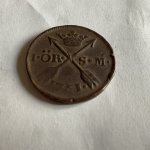Dug
Bronze Member
- Feb 18, 2013
- 1,138
- 1,263
- Detector(s) used
- XP Deus/Sovereign GT.
- Primary Interest:
- Relic Hunting
Thanks, Dug! I will work very carefully with my Dremel because I'm not sure how solid the clasp is. Two more questions: 1) I assume it's OK to put brass in the oven? 2) I'm unfamiliar with Microcrystlline wax. Is it easy to get?
1. I just baked an unloaded 3" Hotchkiss shell that has a brass fuse installed. Baked it for an hour at 350 so I could ensure it was thoroughly dry before treating the iron body with Gempler's rust converter. I wiped any rust converter I got on the brass fuse off as it wanted to turn it dark which I did not want.
2. I bought the microcrystalline wax in blocks off Ebay.
I just used Gempler's for the first time and after two coats still had some brown bleed through on some surface areas. The items had been thoroughly cleaned and only had flash rust on them so I'm a bit confused on why the bleed through. I was debating on applying a third coat of Gemplers but brushed some Ospho on the areas in question instead. Doing that immediately converted the bleed through. It did turn the Gemplers to a grayish color and some areas white, but I had already planned on spray painting with a semigloss black to seal anyway.
I think that with the remainder of the frags I have to do, I am going to seal them with microcrystalline wax instead of a rust converter since I would rather have them dark grey in color instead of black.
The tough thing with very thin iron such as the tongues on the buckle is how much useable iron is left inside. In some situations you may not have any left so be very careful when using the dremel and I would not leave it in the Evaporust for very long for that reason. You just want to stabilize the tongues from further deterioration.
Here is a pic of the batch showing bleed through after 2 coats. The section of rail was treated with microcrystalline wax instead of Gemplers.
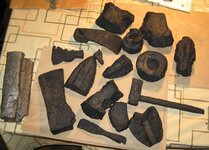
Last edited:


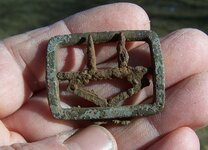
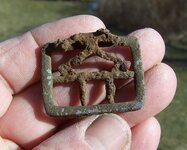
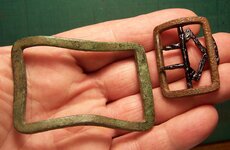
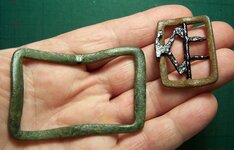
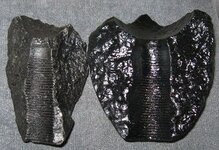
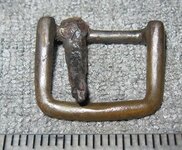
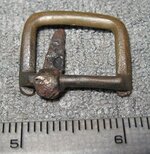

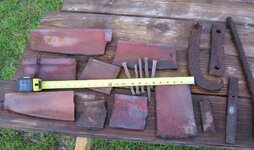
 These were originally the same shade of gray as the stove leg "after photo" above. After heating in the oven, applying a thin coat of crisco, and baking for an hour, they look exactly the same as a piece that has undergone electrolysis.
These were originally the same shade of gray as the stove leg "after photo" above. After heating in the oven, applying a thin coat of crisco, and baking for an hour, they look exactly the same as a piece that has undergone electrolysis. 

